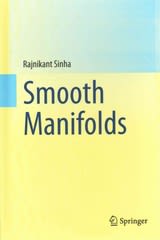Question
In an experiment on braking performance, a tire manufacturer measured the stopping distance for one of its tire models. On a test track, a car
In an experiment on braking performance, a tire manufacturer measured the stopping distance for one of its tire models. On a test track, a car made repeated stops from 60 miles per hour. Twenty tests were run, 10 each on both dry and wet pavement, with results shown in the accompanying table. (Note that the actual braking distance, which takes into account the driver's reaction time, is much longer, typically near 300 feet at 60 mph!) Complete parts a and b below.
| Dry Pavement | Wet Pavement | |
|---|---|---|
| 143 | 210 | |
| 152 | 192 | |
| 142 | 219 | |
| 142 | 207 | |
| 132 | 197 | |
| 147 | 208 | |
| 127 | 207 | |
| 141 |
| a) | Find a 95% confidence interval for the mean dry pavement stopping distance. Be sure to check the appropriate assumptions and conditions, and explain what your interval means. |
Select all the appropriate assumptions and conditions.
A.
The dry pavement stops were made under different conditions and not paired in any way. The independent groups assumption is satisified.
B.
A Normal probability plot of the stopping distances is roughly straight. The nearly Normal condition is satisfied.
C.
These stops are probably representative of all such stops for this type of car, but not for all cars. The randomization condition is satisfied.
Part 2We are 95% confident that the mean stopping distance for this type of car on dry pavement is between
enter your response here
and
enter your response here
feet.(Round to one decimal place as needed.)Part 3
| b) | Find a 95% confidence interval for the mean increase in stopping distance on wet pavement. Be sure to check the appropriate assumptions and conditions, and explain what your interval means. |
Select all the appropriate assumptions and conditions.
A.
The histogram of wet pavement stopping distances is approximately Normal with no outliers. The nearly Normal condition is satisfied.
B.
These stops are probably representative of all such stops for this type of car, but not for all cars. The randomization condition is satisfied.
C.
The wet pavement stops and dry pavement stops were made under different conditions and not paired in any way. The independent groups assumption is satisified.
Part 4We are 95% confident that the mean increase in stopping distance for this type of car on wet pavement is between
enter your response here
and
enter your response here
feet.(Round to one decimal place as needed.)
Step by Step Solution
There are 3 Steps involved in it
Step: 1

Get Instant Access to Expert-Tailored Solutions
See step-by-step solutions with expert insights and AI powered tools for academic success
Step: 2

Step: 3

Ace Your Homework with AI
Get the answers you need in no time with our AI-driven, step-by-step assistance
Get Started


